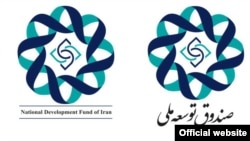Iran’s Supreme Leader ayatollah Ali Khamenei has recently authorized the withdrawal of four billion US dollars from the country’s foreign currency reserves, officially named the National Development Fund (NDF).
Some $2.5 billion of this sum has been allocated to “the strengthening of Iran’s defense capabilities,” and the rest is to be spent on the Iran’s state-run broadcaster and a few development plans.
In this way a fund formed to make sure that coming generations of Iranians would get their fair share of benefits from the country’s natural resources, is being spent on military ambitions and other things that must have been naturally provided for by the country’s annual budget.
It is debatable whether Khamenei was legally in a position to divert funds from the NDF to sectors such as defense or media. Playing with the NDF is clearly not part of the responsibilities of the Supreme Leader as defined in the Iranian Constitutional Law.
Meanwhile, the Fund’s charter leaves no room for diverting funds to military expenditures or the state-run TV.
But this is not the first or the only problem that has plagued NDF.
Iran’s Foreign Currency Reserve Fund was founded in 2000. Its objective was to save for the next generations of Iranians and to make sure that the country’s economy survives when there is a sharp drop in the price of oil. Later, in 2010 it was labelled the National Development Fund.
However, an aura of secrecy always prevailed over the fund, which made it more problematic than beneficial.
It is still not known how much foreign currency was deposited into this fund between 2006 and 2014 when Iran’s oil revenue totalled well over $600 billion. And no one knows how much was withdrawn from that account.
In March 2015, Safdar Hosseini the executive director of the fund announced that the fund was $8 billion in deficit.
“The fund had nothing in it when the price of oil reached $140 per barrel, and the balance is negative when the price dropped to $40 per barrel,” said Safdar Hosseini at the time.
The issue of huge oil revenues from 2006 to 2014 leaving no trace on Iran’s economic well-being has been a constant irritant to ordinary people, who have experienced falling living standards, especially since international sanctions brought the economy into a standstill.
This was the time of Mahmoud Ahmadinejad’s presidency when mismanagement, favoritism and reckless spending were common. But still, people and experts cannot understand how upwards of $600 billion disappeared without any meaningful improvement in the economy or infrastructure.
Government funds such as Iran’s National Development Fund have been designed to confront the “Dutch disease syndrome” and “resource curse” which plague the economies that are based mainly on exporting raw material.
As a country gets huge income from a natural resource, other sectors of the economy tend to suffer.
The revenue materialized out of exporting natural resources creates high inflation and low competitiveness in the economy among other problems.
Oil and gas exporting countries such as Norway and Qatar have ben using similar government funds for foreign investment, creating wealth for their citizens and preventing the Dutch disease.
However, Iran’s problem is not just a “resource curse” as it relies on an unproductive economic model together with favoritism, corruption, mismanagement and huge expenditures for foreign adventures.







